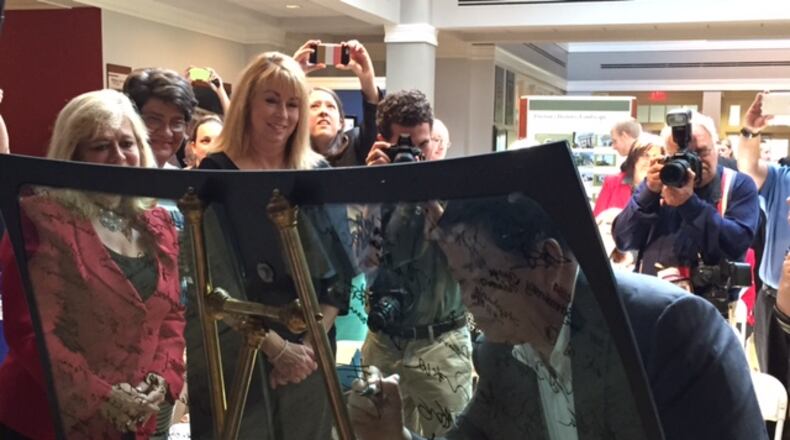But for an object lesson on mutually beneficial American-Chinese cooperation, perhaps the two men could turn their attention to Moraine, Ohio for just a moment.
In Moraine, in a sprawling factory big enough to cover 40 football fields, the narrative of China “stealing” American jobs is ruined — or at least made more complicated. A Chinese industrialist and visionary named Cho Tak Wong unlimbered his check book in a Sinclair Community College conference room three years ago to buy a former General Motors factory off West Stroop Road, with an eye toward building an auto glass plant there, employing 1,000 workers.
One thousand workers have grown since to more than 2,000, and today the plant is the world’s largest auto glass factory, making enough safety glass to fit one of every four cars on the road in America. And Cho has invested more than half a billion dollars into his American operations, including a glass supply plant in Illinois.
Dan Curran, the University of Dayton president emeritus who has a seat on Fuyao Glass America’s five-member board, say company leaders regard the Moraine operation as an American company, being led at the moment by a team of Chinese staff familiar with Fuyao’s longstanding practices.
In time, those Chinese managers will return home, Jeff Liu, Fuyao Glass America president, told Dayton Daily News editors in an interview last week.
Fuyao’s leaders say the company is poised to put the financial losses of the past two years behind it, and they seem determined to make the company profitable in time.
It’s tough to remember sometimes that Fuyao’s operation in Moraine is not GM or Ford. It’s a start-up — a well-funded start-up, no doubt — but a start-up nonetheless.
Bottom line, Fuyao could portend good things ahead in U.S.-Sino relations, especially if Trump and Xi take note.
Headwinds for automotive?
Speaking of auto suppliers, did you read about the Deutsche Bank AG report on the U.S. auto industry last week?
The report’s authors see trouble ahead for the auto industry. Weak auto sales in March, with dropping used car prices, may point to a slipping industry, even after last year’s record U.S. sales. (Recall that 17.6 million vehicles sold in the United States last year.)
The report eyes old auto scrapping, which it says has declined to about 11 million a year from about 13 million to 14 million 10 years ago. That means drivers are holding on to cars longer.
“This has led us to question whether the U.S. is broadly oversupplied, and whether trend demand in the 17 million range is fundamentally supported,” the analysts were quoted as saying in a Bloomberg piece. “If it is not, the oversupply should be self-correcting — the U.S. market will experience declining used-vehicle prices, pressuring new vehicle sales.”
Ominously, the report’s authors describe a “triple threat” of rising interest rates, rising negative equity in vehicle loans and falling used-vehicle prices.
If there’s a slowdown in the auto industry, that has implications for Dayton, Springfield and all of Ohio.
About the Author

